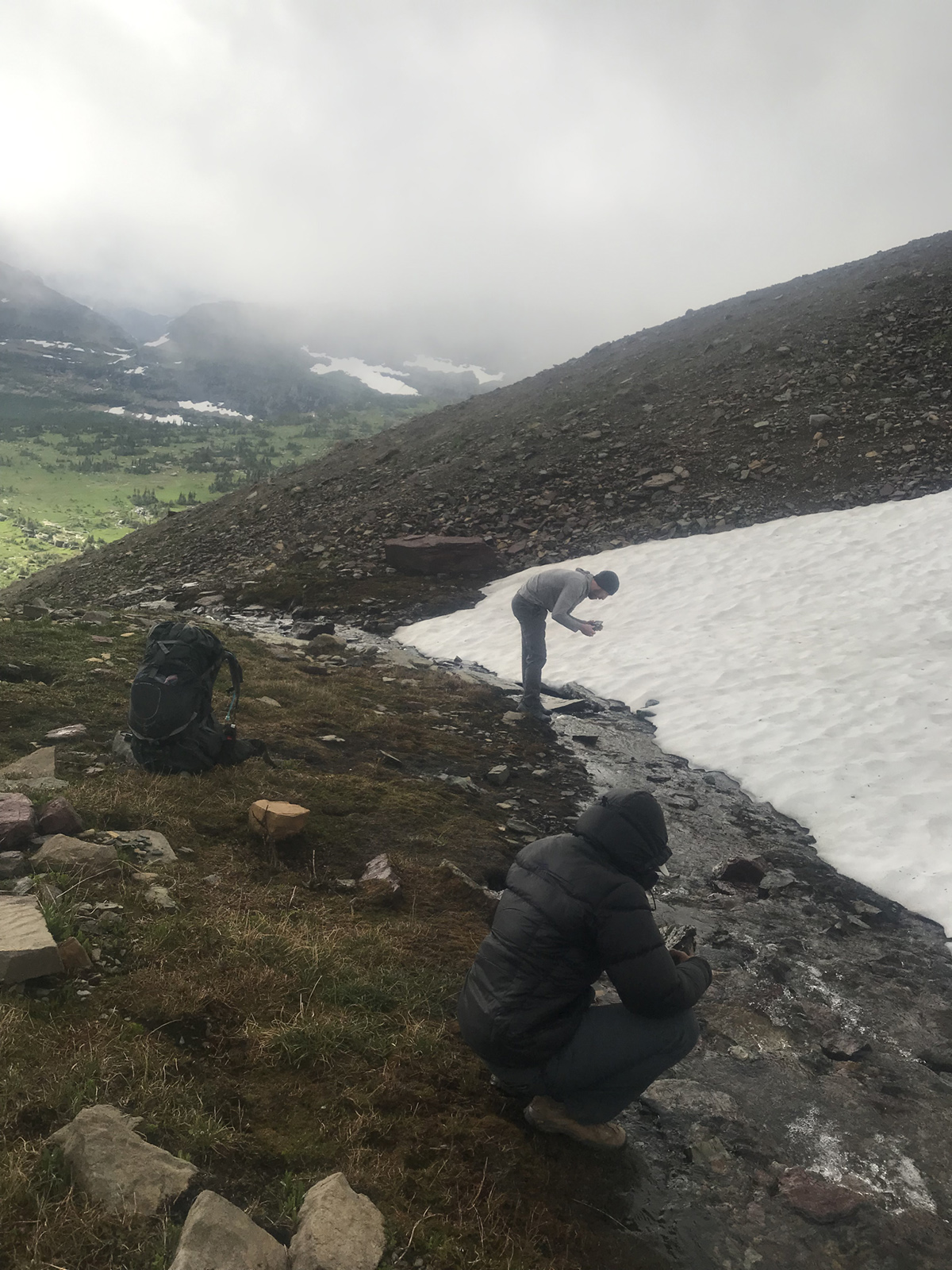It would be easy to look at the icy peaks of a place like Glacier National Park in Montana and assume not much could survive, much less thrive, up there. But Alisha Shah of Michigan State University is hoping her work can help teach people otherwise — before it’s too late.
“I would want people to know that there’s life up in these really, really cold places. In fact, they’re teeming with life, and that life is very much imperiled,” said Shah, an assistant professor of evolutionary ecology in the College of Natural Science and at the W.K. Kellogg Biological Station. Shah, who works in the Department of Integrative Biology, is also a core faculty member of MSU’s Ecology, Evolution and Behavior Program, or EEB.
“We stand to lose a lot if we just sit back and let global temperatures rise,” she said.
Shah is part of a research team that’s examining the biology of meltwater stoneflies against the backdrop of climate change. These insects live only in and around water melting from ice and snow in Glacier National Park.
Publishing in the journal Functional Ecology, the team updated the outlook for these stoneflies on a warming planet, and the prognosis isn’t good.
“Time may be running out,” Shah said.
‘Anything we learned was going to be interesting’
This finding isn’t a total surprise to Shah and her colleagues. The glaciers are shrinking rapidly, and the park’s namesake could be gone altogether by the year 2030. That means the stonefly’s habitats — the natural meltwater streams that flow off these glaciers — are vanishing too.
The stoneflies were designated as threatened in 2019 under the Endangered Species Act. But there was a sliver of optimism in 2020.
Working with Scott Hotaling, now an assistant professor at Utah State University, Shah and a team of researchers showed that meltwater stoneflies could withstand exposures to temperatures much higher than what they would likely face in nature.
Although this was welcome news, the researchers knew then that it probably wasn’t the full story.
“Those experiments told us a little bit about how the animals handle a relatively quick spike in temperature, just for a few minutes,” Shah said. “In reality, that’s not how climate change happens. It’s chronic. It’s happening slowly and constantly.”
So Shah, Hotaling and their colleagues got back to work studying how elevated temperatures affected the stoneflies over time and altered different aspects of their lifecycle.
“The project in a nutshell was bringing meltwater stoneflies into the lab and raising them for a month at different temperatures,” Hotaling said. “Nothing like that had ever been done before, so anything we learned was going to be interesting.”
The team’s new study revealed that, although stoneflies could live through high temperatures, more modest warming could prevent them from maturing completely and reproducing.
Meltwater stoneflies spend their young lives underwater before shedding their exoskeletons and emerging on land as adults. At elevated temperatures, though, the team observed juvenile stoneflies that were able to grow quickly but then unable to complete that final molt to become adults.
“It’s like they’re in a straitjacket and not able to totally undo it,” Shah said. “There’s some breakdown in the machinery. We don’t know what exactly, but they fail to complete their lifecycle.”
“If it suddenly gets warmer one year, there could be a mass die off,” Hotaling said. “If a few of those happen in a row, you could blink out a population really fast.”
‘The backbone of stream ecosystems’
Although pockets of meltwater stoneflies may escape the worst-case scenario, the warmer the planet gets and the more glaciers that disappear, the less likely that becomes. Hotaling said some researchers in this line of work think of themselves as ecological coroners.
Grim as that may be, it also underscores that there’s still valuable information to learn from species heading over the brink. And that knowledge isn’t just about the animals themselves, but about their ecosystems as well.
“Aquatic insects are essentially the backbone of stream ecosystems,” Shah said.
This project is one of only a few studying the thermal ecology of aquatic insects and of even fewer that focus on a species living in a harsh, remote habitat like glacial meltwater, Shah said. She feels fortunate to be part of the team bringing the stonefly’s story to light before it is too late.
“They very well could have disappeared and most people wouldn’t have known,” Shah said. “How sad is that?”
Although time may be running out for the meltwater stonefly, the team said studies like this provide insights and raise awareness that can help protect other vulnerable species in similar environments.
“There’s a lot more to discover about how glacial ecology works and what the ramifications are if something goes away. People think ice is lifeless and that couldn’t be further from the truth,” Hotaling said. “If enough people care about these places, we can make progress and limit the damage that’s going to occur.”
“The more that people know about this, the more they’ll understand that our actions affect life up there,” Shah said. “Our world is so full of diversity, and it’s beautiful. I feel like we have an obligation to pay attention.”


